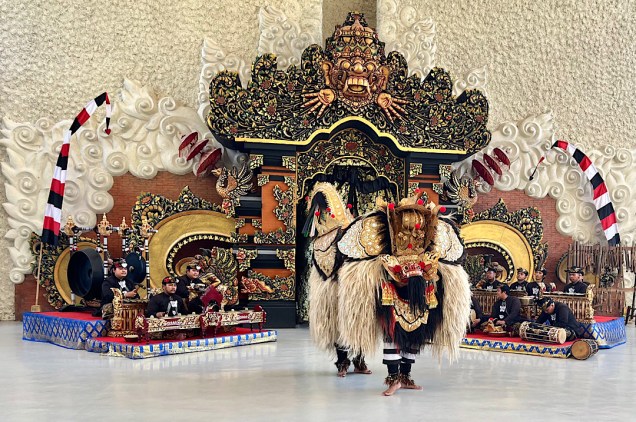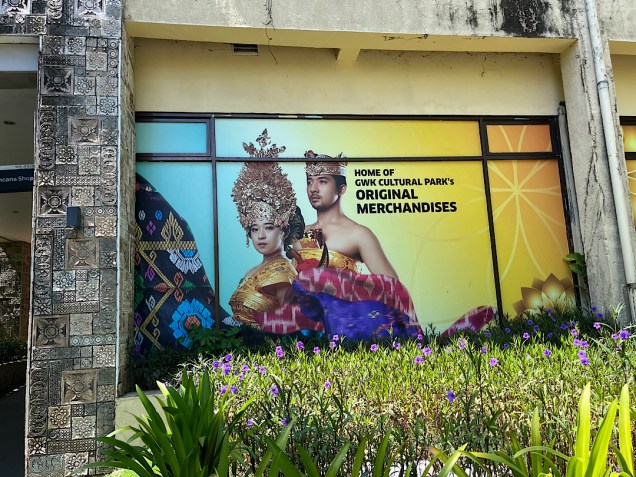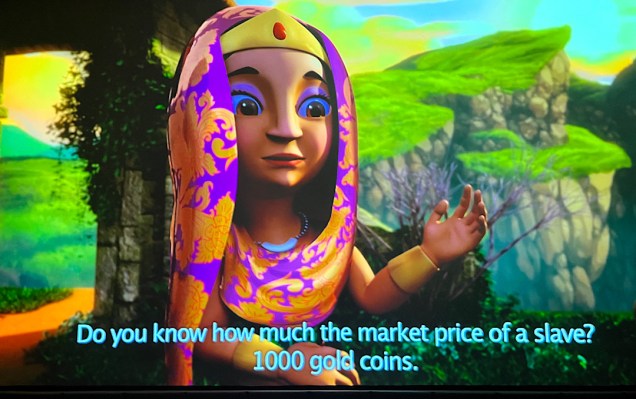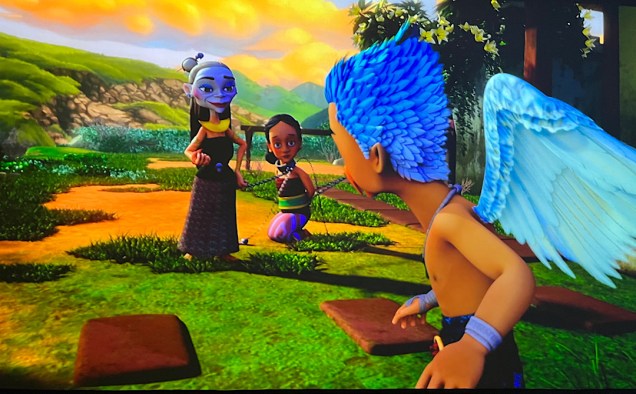 Sometimes I’m thrilled to find the footprint of American culture far from home. Sometimes I love when it isn’t where I’d expect it. We’ve already experienced both in Bali.
Sometimes I’m thrilled to find the footprint of American culture far from home. Sometimes I love when it isn’t where I’d expect it. We’ve already experienced both in Bali.
Ride-sharing is the American export I love more than words can express. Uber doesn’t exist here, but one of its Indonesian offspring, Gojek, has been serving us daily. It liberates us, a mind-blowing improvement over the ways we got around last century. As long as we know where we want to go or can pick a landmark in the general area, we just type that into the Gojek app, and a driver in a clean, air-conditioned vehicle materializes, usually within five minutes. We never have to worry about finding a taxi, a constant source of stress in the bad old days. The rides typically cost $2-$3 for a 15-minute trip; maybe $10 for one that lasts an hour or more.
and a driver in a clean, air-conditioned vehicle materializes, usually within five minutes. We never have to worry about finding a taxi, a constant source of stress in the bad old days. The rides typically cost $2-$3 for a 15-minute trip; maybe $10 for one that lasts an hour or more.
Alas, even though Bali looks tiny on the map of Indonesia, we’ve learned that far too many rides anywhere take at least an hour. I started writing this paragraph on a 40-mile journey from our home-exchange berth to the Banyu Wana Amertha waterfall in northern Bali. In Southern California it might be a 60-minute jaunt. The Gojek app predicted it would take two hours here, and it wound up being two and a half. Neither Steve nor I can think of any place we’ve ever visited that matches this level of vehicular constipation — the result of unloosing hordes of motorcycles and scooters and cars and trucks on narrow, two-lane roads (almost all there is on the island). Slogging through that in a Gojek car isn’t a lot of fun, but my mind reels at the alternative: being tempted to rent a motorbike. That would almost certainly lead to our death or permanent incapacitation.
We took Gojek cars Tuesday to and from the spiffy beach community of Seminyak, where we prowled the shops, popped into a super-fancy hotel, and spent two blissful hours hanging out on heavily padded chaise lounges under a big red umbrella on the wide sand beach.
Wednesday we took a Gojek to the Garuda Wisna Kencana “cultural park” in Bukit, the pendant of land that hangs off the southern end of Bali’s most populated region. We’d heard a bit about the center and hoped it would introduce us to some of Bali’s history and artistic traditions. After suffering through 80 minutes of ghastly traffic, the driver took us deep into a beautiful wooded area and deposited us at the entry complex of what appeared to be a theme park.
This map posted near the ticket booths provided as much information as we would find anywhere. It’s not much.  We paid about $8.50 each for all-day tickets, then spent the next four hours exploring what turned out to be more weirdly, wackily different from the Anaheim and Orlando institutions than even Walt could have imagined. What we figured out by the end of our stay is that you go to GWK for two main reasons.
We paid about $8.50 each for all-day tickets, then spent the next four hours exploring what turned out to be more weirdly, wackily different from the Anaheim and Orlando institutions than even Walt could have imagined. What we figured out by the end of our stay is that you go to GWK for two main reasons.
One is to see the giant statues of Hindu gods. These are colossal bronze creations. The biggest, Vishnu riding his eagle Garuda, stands taller than the Statue of Liberty or Christ the Redeemer in Rio. 
The park contains a couple of other representations of Hindu superheroes. This Garuda looms over “Garuda Plaza.”

You also come to watch the 30-minute performances that take place every hour in a shaded amphitheater. These were delightful, including samples of both a sinuous, flashing-eyed duo…
…and the comic lion-dog barong dance, accompanied by gamelan players who appeared to be having great fun.
Besides gaping at the foot of the statues and watching the dancers perform, Steve and I also checked out the gift shop… …and ate a basic lunch on a pleasant terrace overlooking the city. We were very excited about catching a 35-minute film that screened every hour in a little movie theater; surely it would fill in some of the blanks in our understanding of Bali and its history, I thought. But the film instead was an animated drama that depicted how Arjuna came to be Vishnu’s airborne chauffeur.
…and ate a basic lunch on a pleasant terrace overlooking the city. We were very excited about catching a 35-minute film that screened every hour in a little movie theater; surely it would fill in some of the blanks in our understanding of Bali and its history, I thought. But the film instead was an animated drama that depicted how Arjuna came to be Vishnu’s airborne chauffeur. 
 The drama centered around young Garuda’s having to free his mom who was tricked into being enslaved by the evil witch, Kadru. It was cute and fun but about as educational as a Saturday morning cartoon.
The drama centered around young Garuda’s having to free his mom who was tricked into being enslaved by the evil witch, Kadru. It was cute and fun but about as educational as a Saturday morning cartoon.
We also spent a lot of time searching for information about the megalithic stones that to me made the whole complex feel a bit like a modern art installation.  Why were THEY here? What were they? Our 2021 edition of Lonely Planet Indonesia, incredibly, didn’t even mention the GWK cultural park. In the first-floor lobby that underlies the gigantic statue of Vishnu riding on Arjuna, we found some historical photos that hinted at why. The center apparently was only inaugurated in the fall of 2018, and we imagine the guidebook went to press before that. After our visit, we found a bit more information on Wikipedia, which explained that the park began as a government project, then construction shut down when the Asian financial crisis hit in the late 90s. A Balinese real-estate developer finally stepped in to take over the project and finish it. But nowhere in the park or online could we find an explanation for those monoliths. (Our theory is that the land originally was a rock quarry, and the monoliths were remnants of the original stone. But we don’t know if that’s right.)
Why were THEY here? What were they? Our 2021 edition of Lonely Planet Indonesia, incredibly, didn’t even mention the GWK cultural park. In the first-floor lobby that underlies the gigantic statue of Vishnu riding on Arjuna, we found some historical photos that hinted at why. The center apparently was only inaugurated in the fall of 2018, and we imagine the guidebook went to press before that. After our visit, we found a bit more information on Wikipedia, which explained that the park began as a government project, then construction shut down when the Asian financial crisis hit in the late 90s. A Balinese real-estate developer finally stepped in to take over the project and finish it. But nowhere in the park or online could we find an explanation for those monoliths. (Our theory is that the land originally was a rock quarry, and the monoliths were remnants of the original stone. But we don’t know if that’s right.)
Americans don’t do theme parks or other tourist attractions this way. We give visitors lots of explanation and information. The absence of that at GWK didn’t bother me. I liked the reminder that I was immersed in a place very different from the one back home.